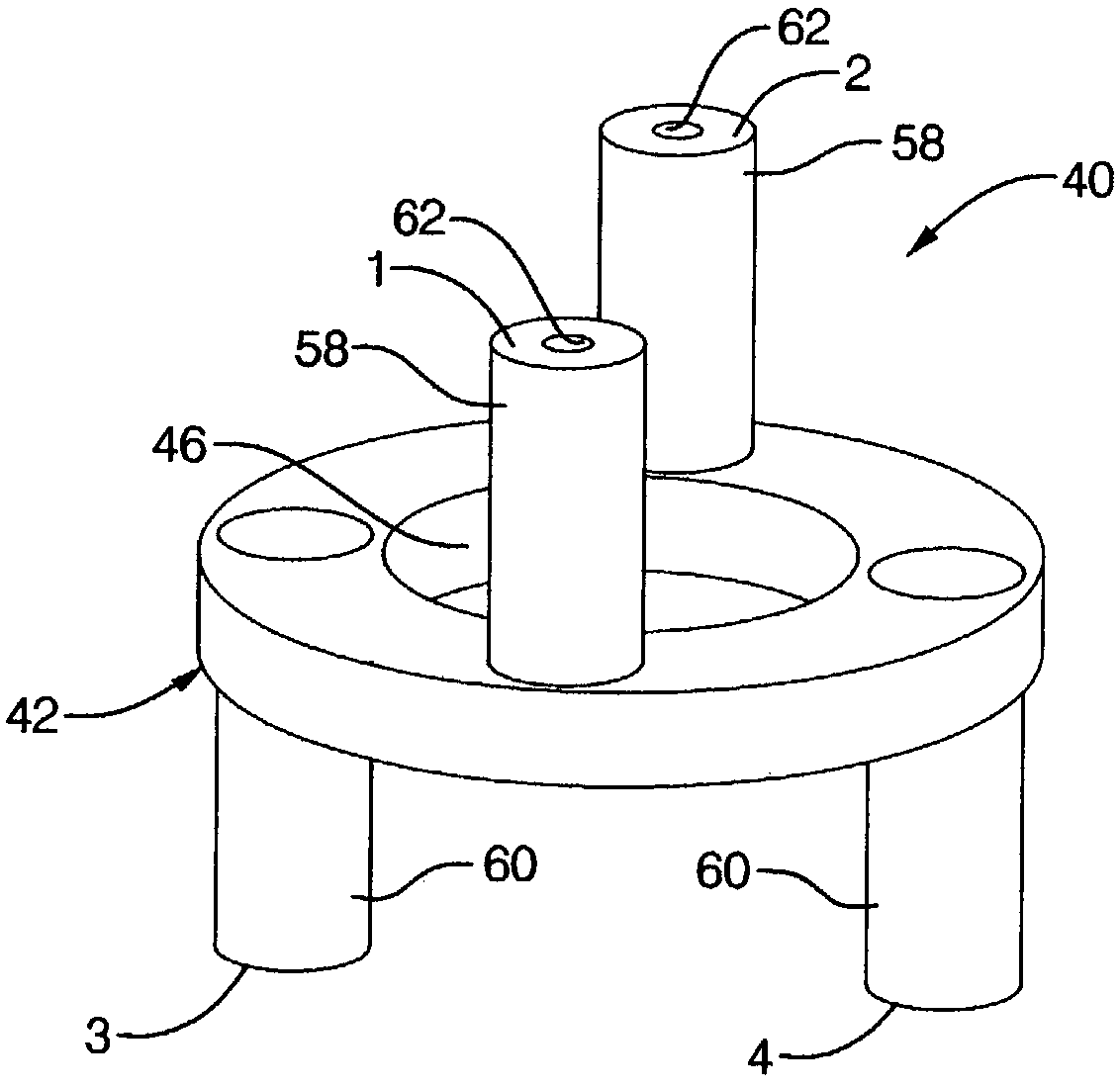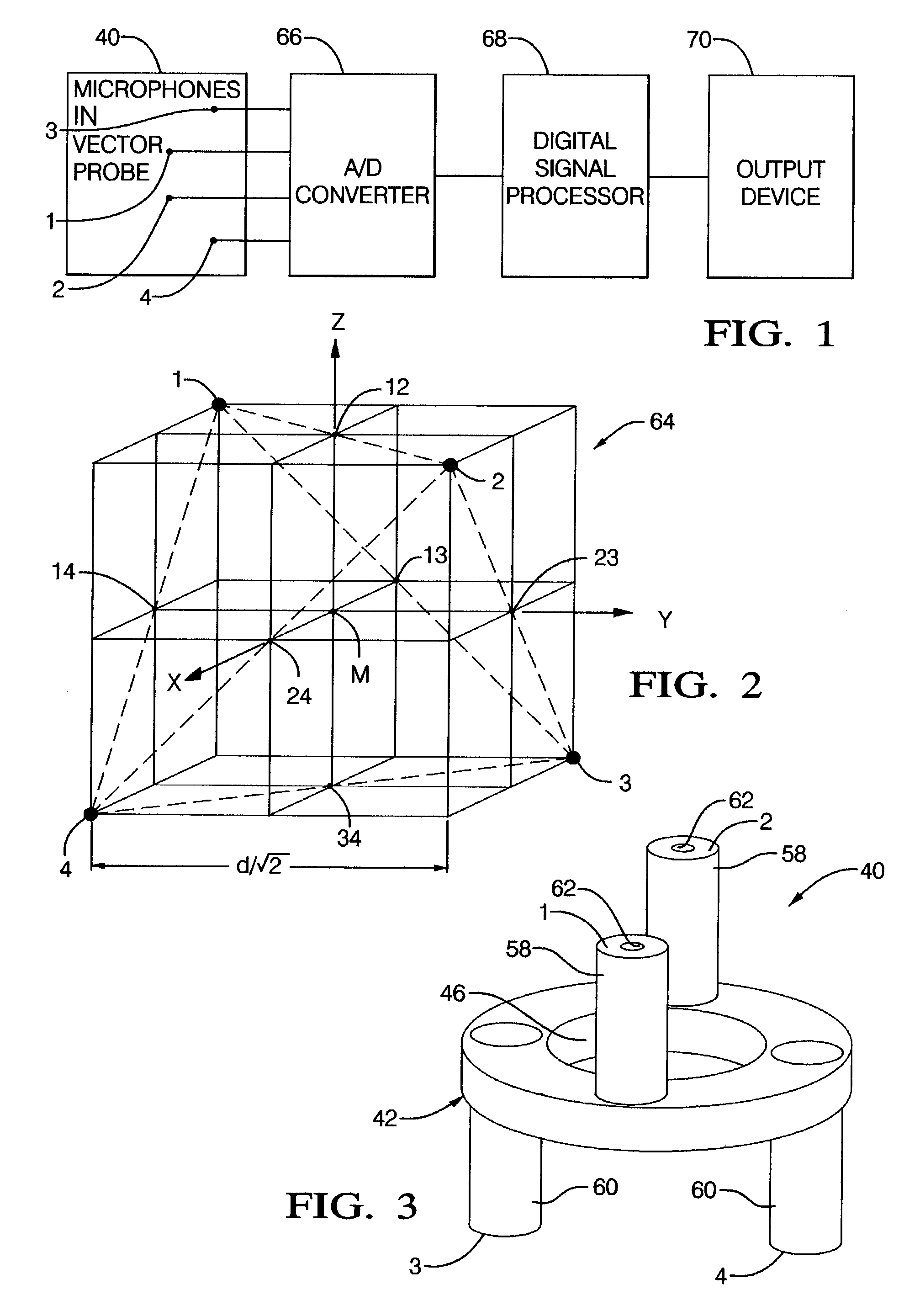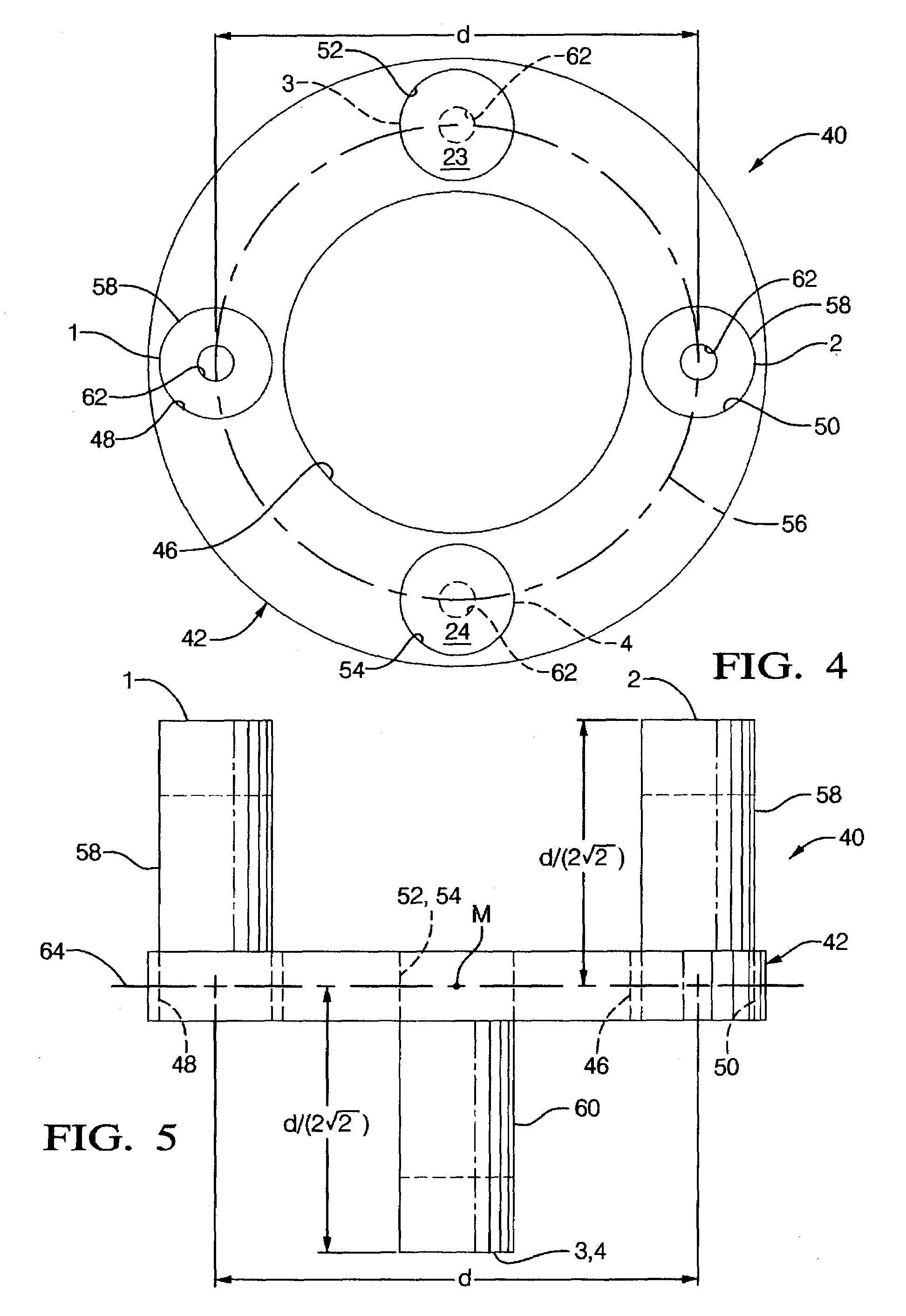Acoustic measurement method and apparatus
a measurement method and acoustic technology, applied in the field of soundintensity vector measurement, can solve problems such as less stable, achieve the effects of preserving the ommidirectional nature of the probe, compact and accurate, and reducing interference with the sound field
- Summary
- Abstract
- Description
- Claims
- Application Information
AI Technical Summary
Benefits of technology
Problems solved by technology
Method used
Image
Examples
Embodiment Construction
[0050]FIG. 1 is a block diagram illustrating the acoustic measurement apparatus of the present invention. Block 40 represents the vector probe 40 carrying microphones 1, 2, 3 and 4. The four microphones are connected to a converter 66 that converts the analog signals from the microphones to digital form for input to a digital signal processor 68. The processor normalizes the digitized signals using transfer functions determined using a novel technique to be described later. At the measurement point, it computes the three components of the sound-intensity vector and, additionally, the three components of the sound-velocity vector and the sound pressure, using mathematical relations to be subsequently discussed, and presents the results on a monitor screen or other output device indicated by numeral 70. The invention uses a cross-spectral formulation, to be subsequently described, to determine sound intensity. The signal processor can also determine the direction of a sound source fro...
PUM
| Property | Measurement | Unit |
|---|---|---|
| sizes | aaaaa | aaaaa |
| sizes | aaaaa | aaaaa |
| diameter | aaaaa | aaaaa |
Abstract
Description
Claims
Application Information
 Login to View More
Login to View More - R&D
- Intellectual Property
- Life Sciences
- Materials
- Tech Scout
- Unparalleled Data Quality
- Higher Quality Content
- 60% Fewer Hallucinations
Browse by: Latest US Patents, China's latest patents, Technical Efficacy Thesaurus, Application Domain, Technology Topic, Popular Technical Reports.
© 2025 PatSnap. All rights reserved.Legal|Privacy policy|Modern Slavery Act Transparency Statement|Sitemap|About US| Contact US: help@patsnap.com



